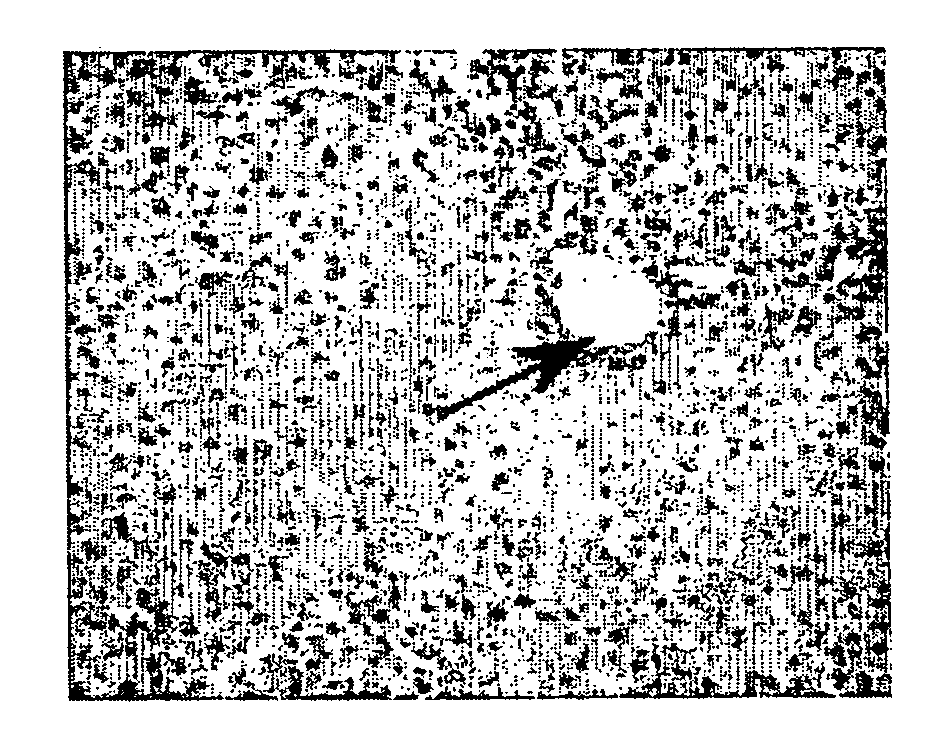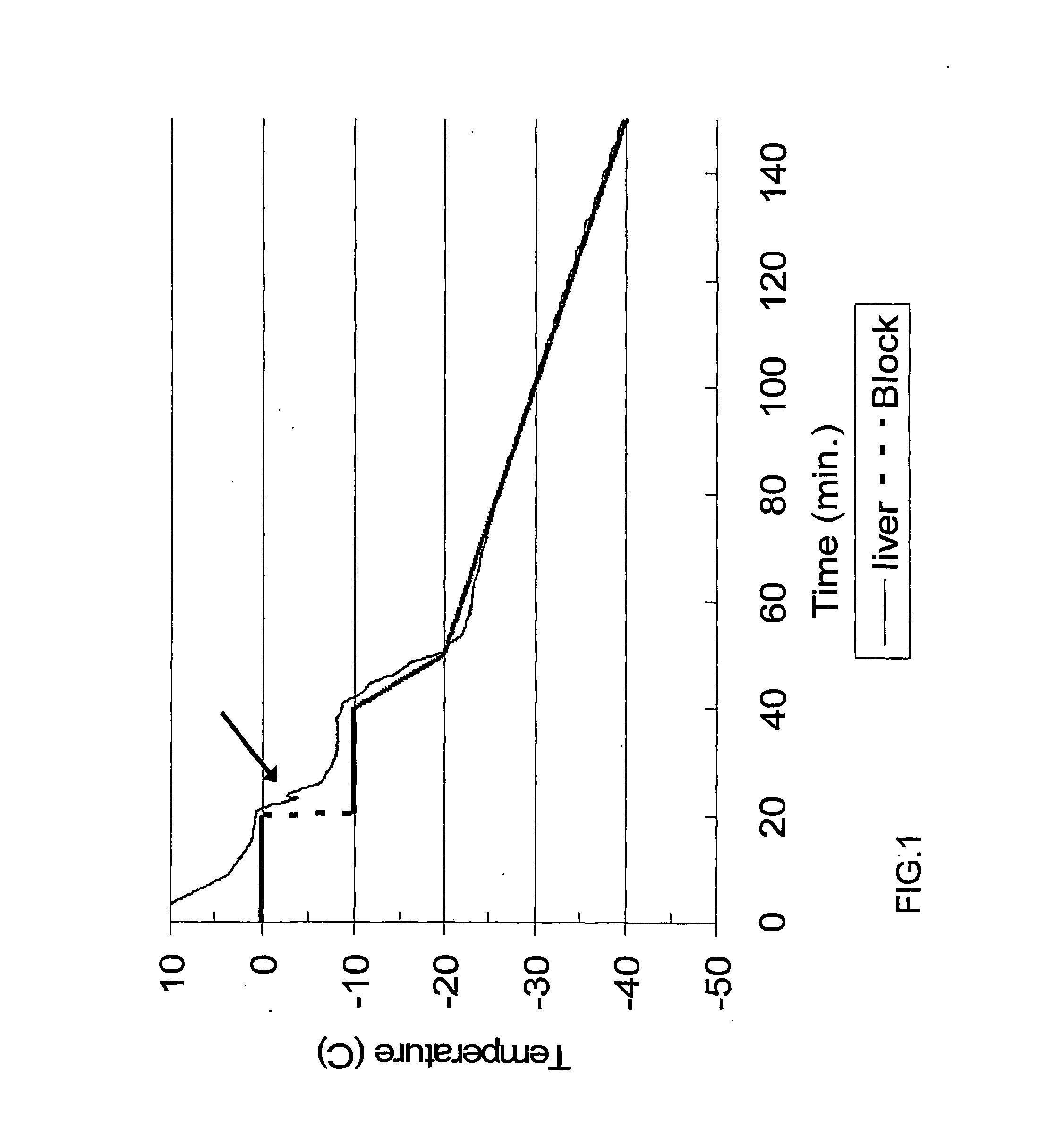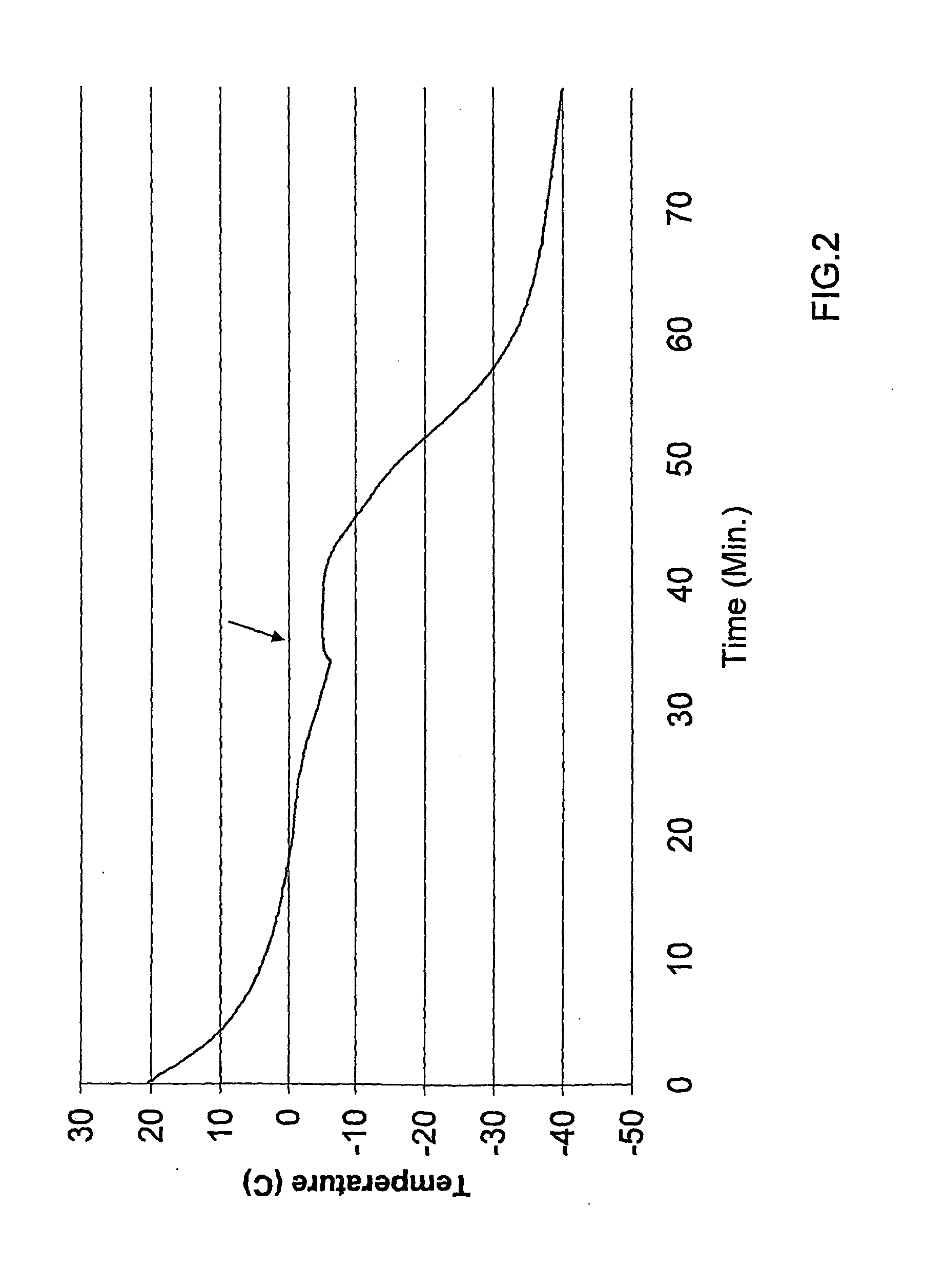Frozen Viable Solid Organs and Method for Freezing Same
- Summary
- Abstract
- Description
- Claims
- Application Information
AI Technical Summary
Benefits of technology
Problems solved by technology
Method used
Image
Examples
example 1
Freezing of Liver
[0090]Freezing Porcine liver in LSFS
[0091]Pigs were anaesthetized (intramuscularly) with 10 mg / kg ketamine hydrochloride and 4 mg / kg xylasine hydrochloride (Vetmarket, Israel). The liver was exposed by a transverse mid-incision. The vena cava caudalis was ligated and a small cut was made. Silicon tubing (Teva medical, Israel. I.D. 3 mm O.D. 4 mm) was inserted via the portal vein and connected to a peristaltic pump. The liver was perfused with Hanks balanced salts solution (Biological industries, Beit Ha'emek, Israel) supplemented with 370 mg / liter Ethylene Diaminetetraacetic Acid (EDTA, Sigma Israel) and 5 U / ml Heparin (Sigma Israel) at 150 ml / min for 5 min. at room temperature in order to flush the blood out of the liver. This was followed by a 5 min. perfusion with freezing solution consisting of University of Wisconsin (UW) solution (Bristol-Myers Squibb Pharmaceutical, Ireland) supplemented with 10% Ethylene Glycol (EG) (Sigma Israel) at 4° C. Flow rate was main...
example 2
Heart Freezing
[0113]Male Sprague Dauley rats (280-320 g) were obtained from Harlan Laboratories (Jerusalem, Israel). The rats were anticoagulated with heparin sodium (500 U / rat, intra peritoneal and 30 minutes later anesthetized with pentobarbital sodium (30 mg / rat, intra peritoneal). Hearts were immediately removed and placed in heparinized ice-cold saline solution. The hearts dimensions were about 2-2.75 cm in length, with a diameter of about 1 cm.
[0114]The aorta was cannulated to a Langendorff perfusion apparatus. The pulmonary artery was cut open to provide drainage. Haemodynamic parameters were assayed for each heart during perfusion (before freezing) and reperfusion (after thawing), when the hearts were connected to the Langendorff apparatus, as follows:
[0115]A latex balloon-tipped catheter was inserted through an incision in the left atrium and advanced through the mitral valve into the left ventricle and connected to a pressure transducer placed at equivalent height to the h...
PUM
 Login to View More
Login to View More Abstract
Description
Claims
Application Information
 Login to View More
Login to View More - R&D
- Intellectual Property
- Life Sciences
- Materials
- Tech Scout
- Unparalleled Data Quality
- Higher Quality Content
- 60% Fewer Hallucinations
Browse by: Latest US Patents, China's latest patents, Technical Efficacy Thesaurus, Application Domain, Technology Topic, Popular Technical Reports.
© 2025 PatSnap. All rights reserved.Legal|Privacy policy|Modern Slavery Act Transparency Statement|Sitemap|About US| Contact US: help@patsnap.com



